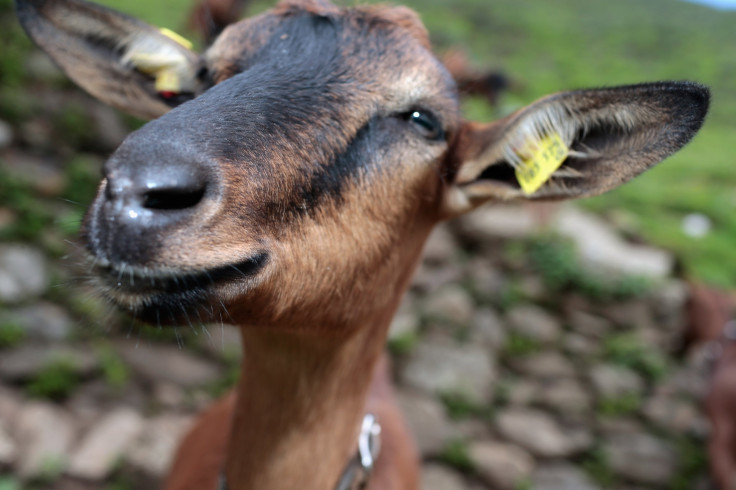WATCH: 'Demon Goat' In India Has Human-Like Face

A goat-like creature discovered in India appeared to have a face that more-closely resembled a human. Fox News reported Tuesday that Villagers were quickly startled by the goat's appearance, which lacked similarities to those of a typical goat.
Video footage of the animal quickly circulated the internet. Two people in the video appeared to be holding onto the goat-like creature while the animal continuously stuck out its tongue. The pair pulled the animal around while trying to establish what the goat-like creature was.
The video went viral by way of Facebook user Samira Aissa. Aissa shared three photos and video footage of the creature in action Aug. 16.
"A strange creature has been discovered in India. The Animal, whose shape resembles that of a human being, terrifies a whole village," she wrote in the video's caption.
The video has garnered more than 49,000 reactions and over 500,000 shares. The video also racked up numerous comments from baffled Facebook users totaling more than 54,000. Several commenters believed the goat's human-like appearance was the result of bestiality, which is a scientifically impossible explanation. Others either questioned what the animal was or called it "ugly."
Instead of a snout for a nose, the goat's nose faced inward. The creature's lips pointed upward, which is a facial feature that is uncommon among goats and other animal species. The dark brown animal also appeared to be hairless.
The human-like goat isn't the first animal to have an unusual face deformity. According to the Daily Mail, a mutant pig was discovered in Cuba Monday. The pig reportedly had one eye and ears that closely resembled those of a chimpanzee.
According to ActForLibraries.com, genetically mutated traits in animals can occur in a few different ways. Mutations can be inherited or acquired later in life by animals either through replication issues or environmental reasons (i.e. natural or human-caused). Anomalies like these, while common, could have many different outcomes in the way it affects an animal.
"Genetic mutations are said to either be beneficial, harmful or have little to no effect on an organism at all, similar to the effects of mutations in humans," the site reported.
Although it's highly unusual for an animal to take on a human-like face, Boredom Therapy points out that genetic mutations Albinism (all-white) and Melanism (all-black) can dramatically alter the color of an animals outer-appearance. While genetic mutations like these can make it harder to determine animals that are commonly recognizable, new species are still identified annually.
According to a 2015 report for Atlas Obscura, approximately 15,000 and 18,000 new species are discovered each year — an identification rate that has remained stable for years. However, the number does prove to be misleading because some of these reported "discoveries" also qualify as animal classification shifts, among other factors.
© Copyright IBTimes 2024. All rights reserved.






















